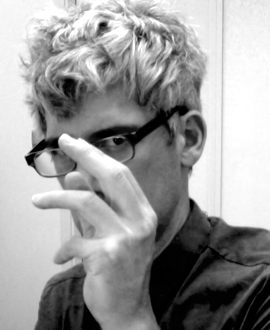Artist Statement
Programmatic or computational art is often related to art in other media: visual, performative, conceptual, and so on. The art systems of The Readers Project relate to writing and to reading, to our encounters with literary language. This project
is an essay in digital language art. The Readers Project visualizes reading, although it does not do this in the sense of miming conventional human reading. Rather, the project explores and visualizes existing and alternative vectors of reading,
vectors that are motivated by the properties and methods of language as such and linguistic aesthetics.
Visualization, especially as a function of computation, is now quite commonplace in artistic practice, but it has little culture moment unless it provides critique, and it is not art unless it conveys an aesthetic. The Readers Project is implicitly critical
of conventional reading habits. Further, because the project’s readers move within and are thus composed by the words within which they move, they also, effectively, write. They generate texts and the traces of their writings are offered to
the project’s human readers as such, as writing, as literary art; published as real-time streams of live-writing, available to anyone with internet access.
Computationally-engaged text generation has a significant, if marginal, history in literary art practice. The Readers Project is innovative, however, in having found a number of ways to display the primary source of a text generator’s inputs within this
source’s typographically structured literary environment. A less obvious but equally important aspect of the project is its use of current natural language information—especially concerning the relative frequencies of words and phrases considered
by the readers—culled from the largest corpus of human language that has ever existed, a universe of language no longer deep within or distant from us, but now made visible to all by the free demons of web indexing and, more recently, by active
cells of the Natural Language Liberation Front.

